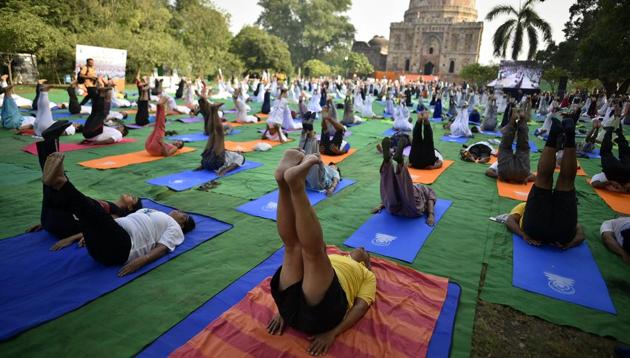Rediscovering the ancient practice of Yoga for the future generations
The earliest evidence of Yoga is recorded on the Harappan seals of the Indus Valley or the Sindhu-Saraswati Civilisation by renowned archaeologist John Marshall in the early 20th century.
One of the biggest contributions of India to the world is the knowledge of Yoga, now accepted internationally by the United Nations (UN) and the world. International Yoga Day is celebrated every year on the day of Summer Solstice (June 21) since 2014. While we in Gurugram know about this popular day and often practice Yoga in groups, or on our own with specialised trainers available across the city, to counterbalance the increasing urban pressure on our health and state of mind, we rarely realise that Yoga has existed in this land throughout the centuries.

The earliest evidence of Yoga is recorded on the Harappan seals of the Indus Valley or the Sindhu-Saraswati Civilisation by renowned archaeologist John Marshall in the early 20th century. Substantial research has been carried by national and international scholars on the content and postures depicted on these seals that prove that Yoga was practised as far back as 2700 BC. The number of seals and fossil remains of the Indus Valley Civilisation with Yogic motifs and figures performing Yoga Sadhana clearly establish the presence of Yoga in ancient India and the Gurugram region, which was historically a part of the Sindhu-Saraswati belt.
Besides such historical evidence, there is the associated mythology of the Gurugram region with the epic of Mahabharata recording the practice of Yoga. In the Bhagavad Gita, each of the 18 chapters is entitled Yoga (the term originating in the Sanskrit root Yuj meaning joining). Lord Krishna clearly instructs his disciple Arjuna that Yoga means “cultivating the proper attitude of mind” in various circumstances that you face during your lifetime.
The particular Sankrit shloka, “tatra ekagram mana krtva yatacittendriya kriyah/upavishyasane yunjyadyogamatmavishud’dhaye//” (Bhagavad Gita, 6.12) means that “the adept, seated firmly in one posture, restraining his senses and mind, with supreme one-pointed concentration, engage himself in the practice of Yoga”. Guru Dronacharya’s lesson of supreme concentration to Arjuna as the archer targeting the bird’s eye is an example of yogic practice of concentration.
While we often consider Yoga today in its simplistic form of a physical exercise and stress reliever, it is the supreme concentration and the coming together of the body, mind and soul that leads to the ultimate benefits of health.
It is also interesting to note the differences between the various means of imparting yogic education in earlier times and now. The knowledge used to be passed on traditionally through experienced and wise persons in the families and then by the rishis and munis (sages) in ashrams (hermitage). However today, we see that Yoga education in cities is being imparted by many eminent Yoga institutions, Yoga colleges and Yoga departments in the universities, along with several private trusts and societies. Many Yoga clinics, Yoga therapy and training centres, preventive health care units of Yoga, and Yoga research centres have been established in hospitals, dispensaries and medical institutions.
As recorded by the ministry of Ayush for the 2019 International Yoga Day, the activity was widespread in metropolitan cities and the various villages of Haryana. One example that stands out is that of the Taj Nagar gram panchayat located in the Gurugram district. The village takes Yoga very seriously and has started conducting regular Yoga training classes. Inhabitants of the nearby village of Khadakpur have also joined them. Perhaps this revival and spread of Yoga in the 21st century in towns and villages around Gurugram will improve mental health and tolerance along with a love for ecological balance among the residents and help retain some of our past values for our future lifestyle.

Stay updated with all the Breaking News and Latest News from Mumbai. Click here for comprehensive coverage of top Cities including Bengaluru, Delhi, Hyderabad, and more across India along with Stay informed on the latest happenings in World News.
Stay updated with all the Breaking News and Latest News from Mumbai. Click here for comprehensive coverage of top Cities including Bengaluru, Delhi, Hyderabad, and more across India along with Stay informed on the latest happenings in World News.





